"The Barry Rosensteel Japanese Print Collection consists of 126 woodblock prints that date from the eighteenth to early twentieth centuries. The work of over forty artists is represented in the collection [..]
The images portray Japanese culture through detailed depictions of portraits, landscapes, wildlife and theatrical performances, taking into account some of Japan’s rich history. [..]
The earliest print, dating to 1760, is by Kitao Shigemasa (1739-1820) and depicts a carp leaping a waterfall. The works of several artists of the Utagawa school are found in the collection. [..]
The prints were produced with high-quality paper. Vegetative color pigments, and, in some cases, ground precious metals, were used as part of the creative process."
[from: Collection Contents at the University of Pittsburgh]
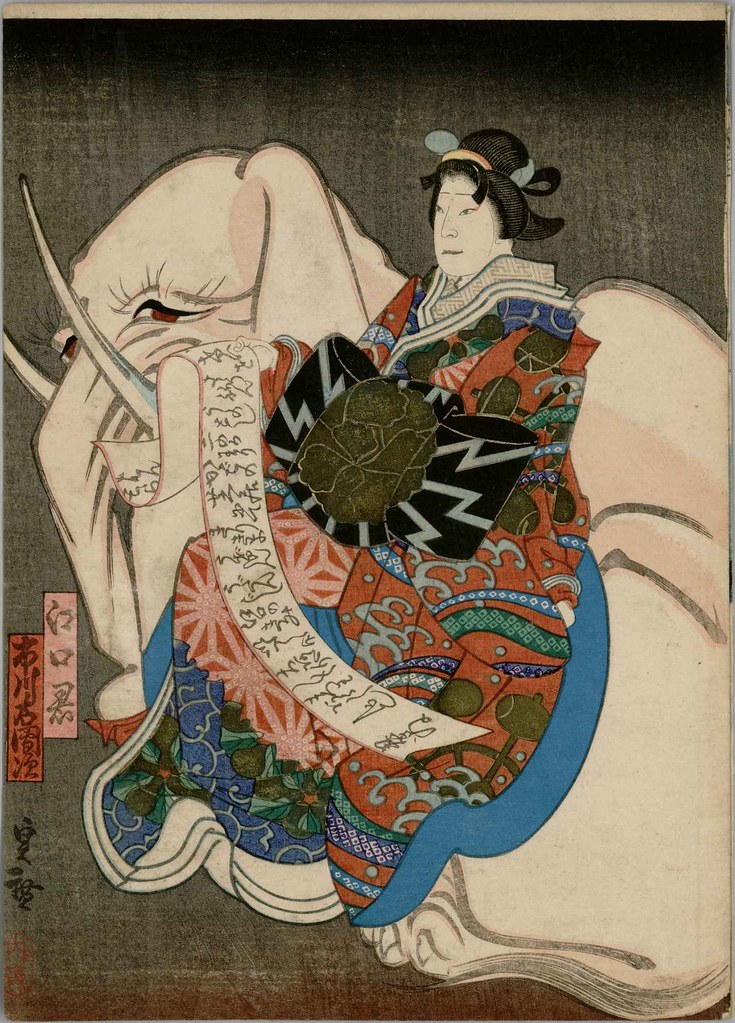
Title: Eguchi no Kimi seated on a recumbent pink elephant representing the Bodhisattva Fugen
Creator: Sadahiro, Utagawa (active ca. 1825-1875)
Date: 1850
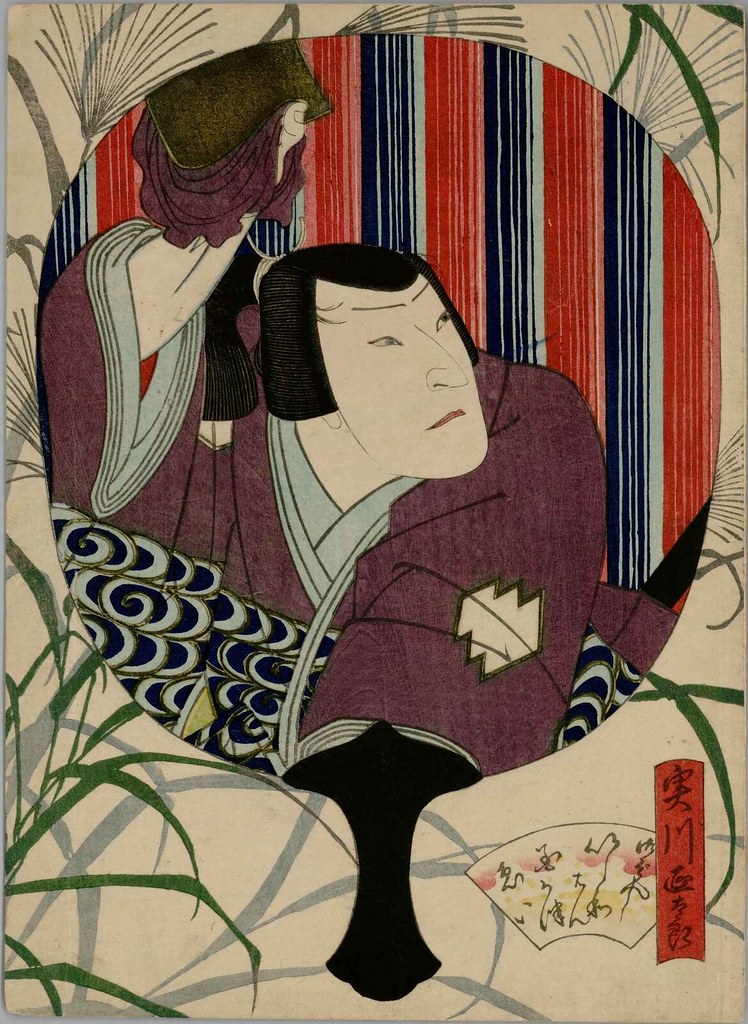
Title: Portrait of an actor in a purple robe on striped fan
Creator: Yoshiyuki, Mori (1835-1879)
Date: Unknown
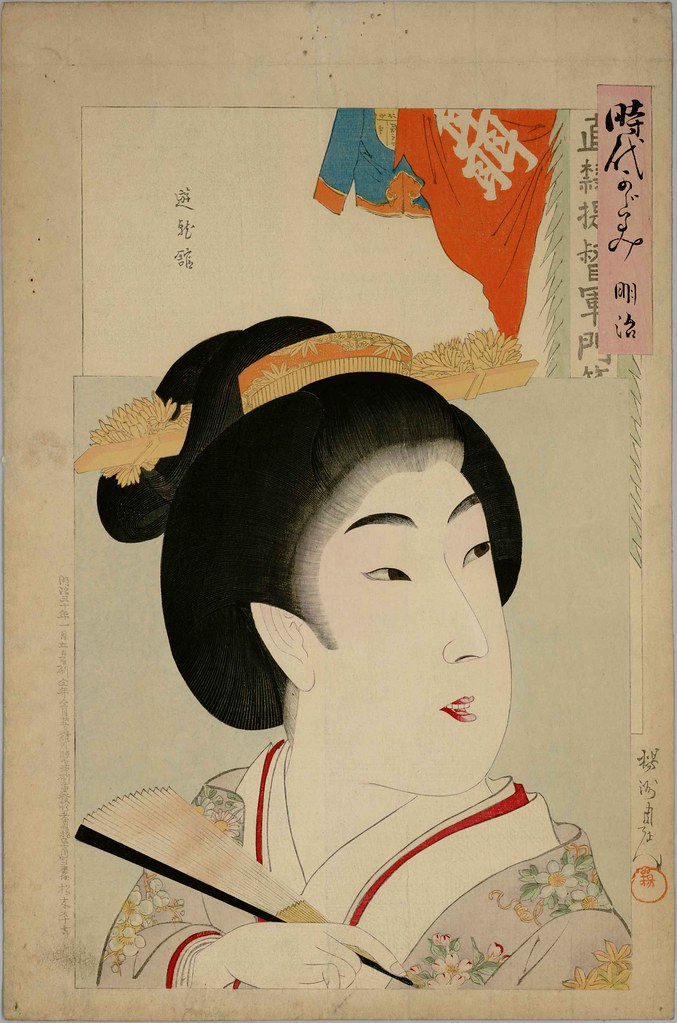
Title: Okubi-e portrait of a beauty
Subjects: Block printing, Japanese; Geishas in art.
Creator: Chikanobu, Kitagawa
Date: Unknown
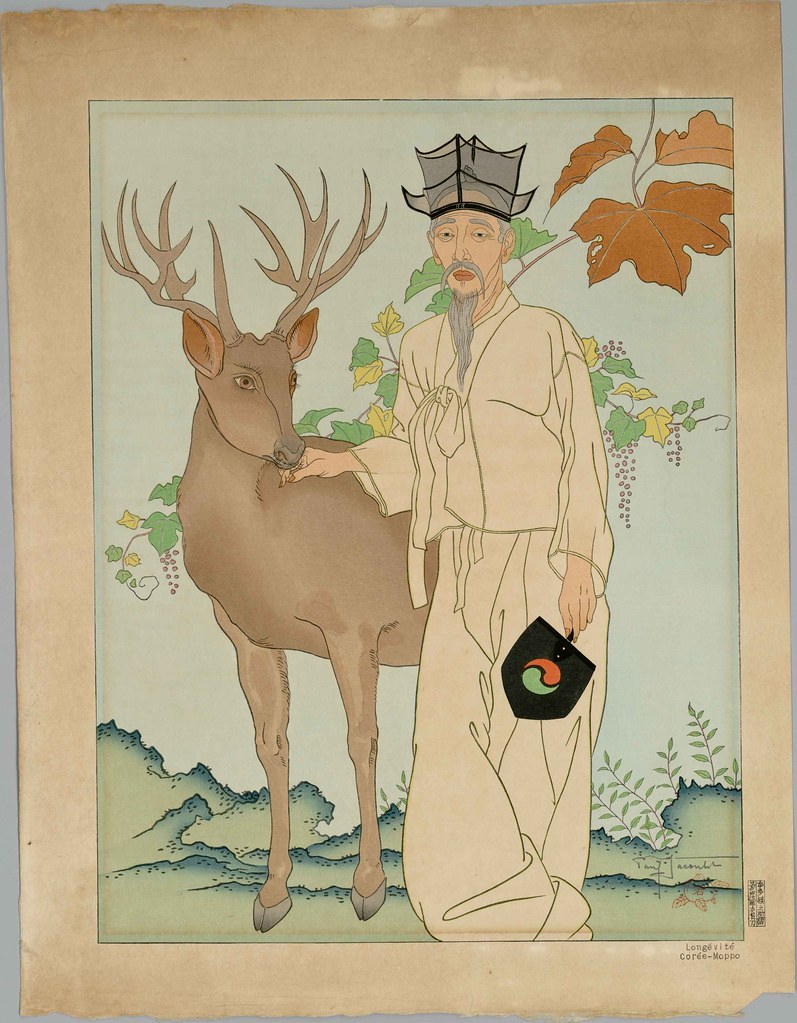
Title: Longevite
Creator: Jacoulet, Paul (1902-1960)
Date: November 28, 1948
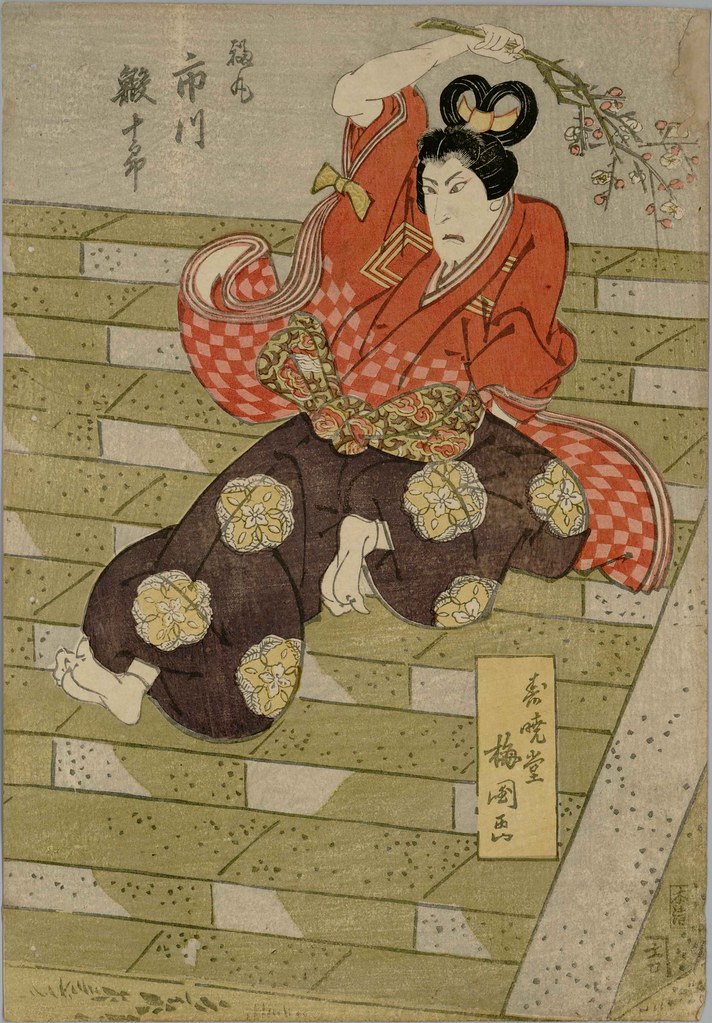
Title: Portrait of Ichikawa Ebijuro (Japanese actor)
Creator: Umekuni, Toyokawa (active first quarter 19th century)
Date: 1820
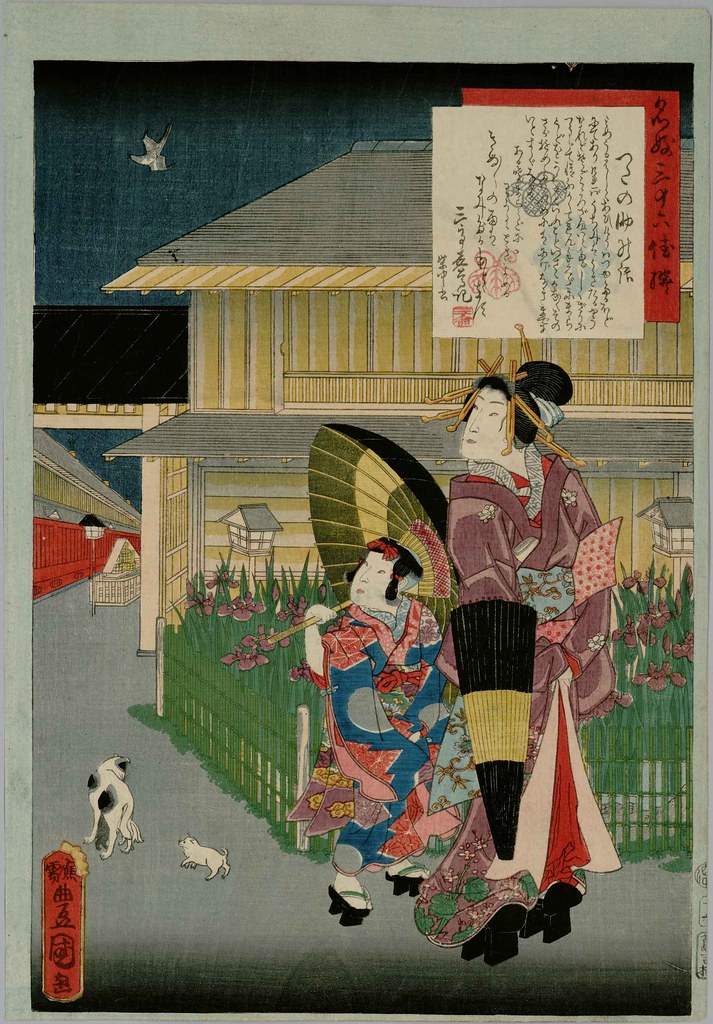
Title: The courtesan Tsukonosuke with her attendant gazing at a cuckoo in the rain
Series: Thirty-six Manners and Customs of Courtesans
Creator: Toyokuni III, Utagawa [Utagawa Kunisada] (1786-1864)
Date: 1861

Title: Nakamura Utaemon III as Ichikawa Goemon
Creator: Ashiyuki
Date: 1826
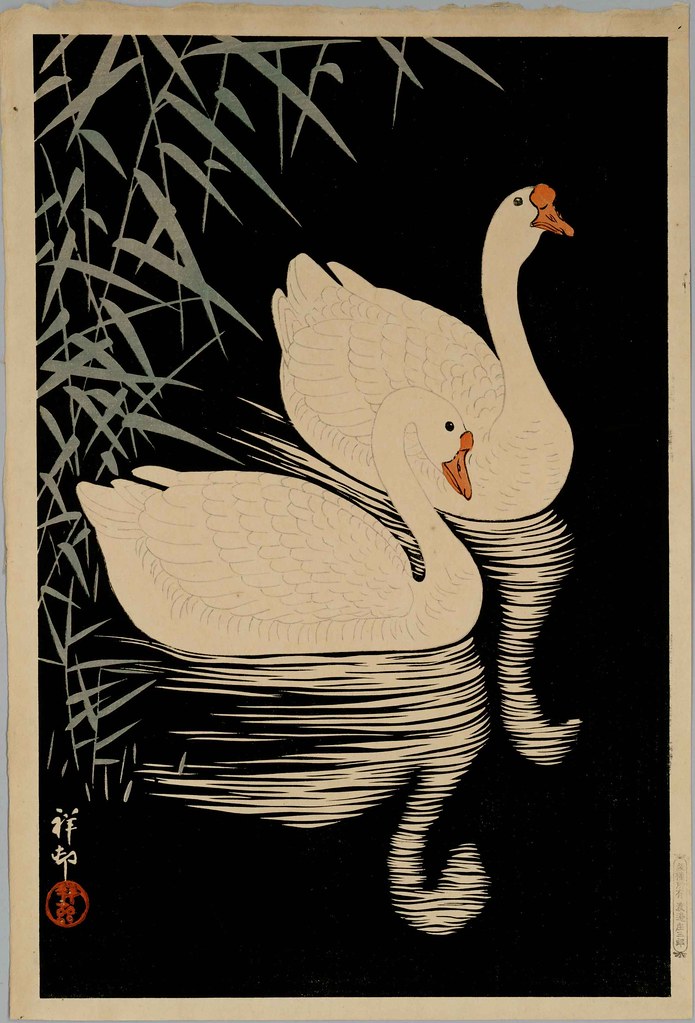
Title: Swans
Creator: Shoson, Ohara (1877-1945)
Date: Unknown
Update: see - The Art of Ohara Shôson at Scriblets.

Title: Return from Festival (Matsuri kudari), Nakamura Utaemon on horseback accompanied by a group of five actors
Creator: Toyokuni, Utagawa (1769-1825)
Date: 1810
Note: One frame from triptych; prints depicting actors in everyday life are rare.

Title: A Daimyo's wife and her attendants fording a river in a palanquin
Creator: Toyokuni, Utagawa (1769-1825)
Date: 1794
Note: One frame from triptych
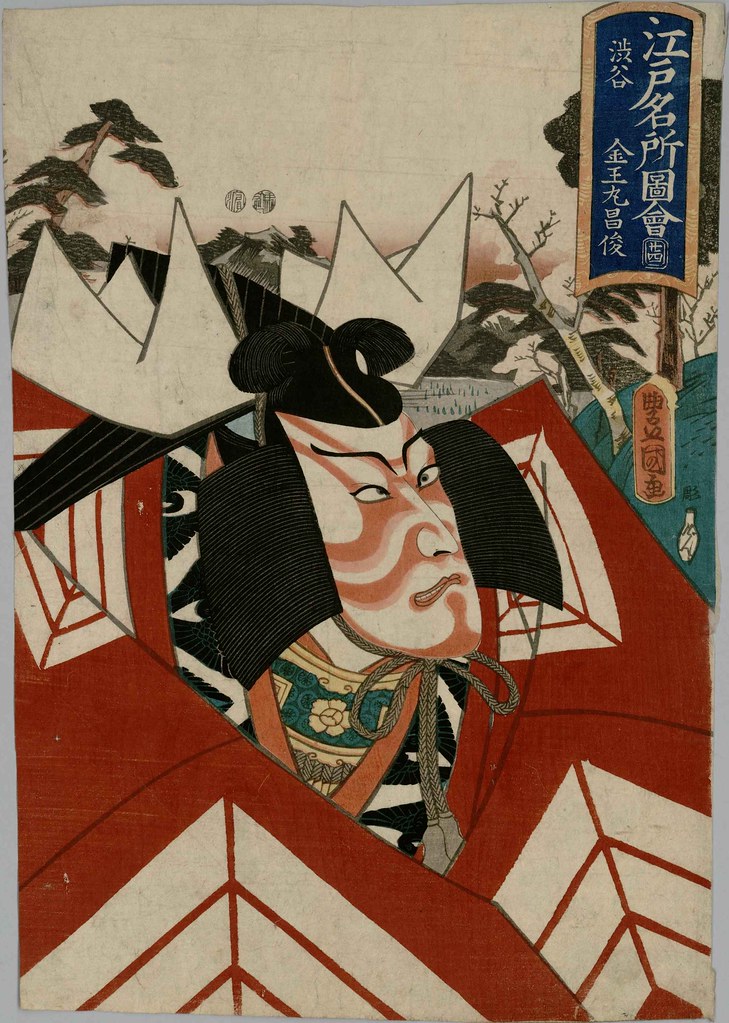
Title: Half-length portrait of an actor as Kaneomaru
Series: Edo meisho zue (Famous Views of Edo)
Creator: Kunisada, Utagawa (1786-1864)
Date: Unknown
The Barry Rosensteel Japanese Print Collection is available from the University of Pittsburgh [thumbnails].
Previously: Japan; from the delicious bookmarks - a collection of general category tags and brief summaries helping to organise all 1100+ BibliOdyssey posts.
absolutely stunning and incredible, with such intricate and fine detail.
ReplyDeletethank you for posting.
http://dallianceswithsuitsandskirts.blogspot.com/
FABULOUS! The Swans - my favorite.
ReplyDeleteInteresting how each collector reveals something of themselves by their selection of prints. Emile Guimet made his selection noticeably differently from this. And when you look at the Freer Gallery (collection online at www.asia.si.edu) you can sift out the Robert O. Muller choices from the original collection by Charles Lang Freer.
ReplyDeleteThe Emperor must have imported the elephants from Thailand. Any information on this?
ReplyDeleteThe first elephant arrived in Japan in 1408, according to Simply Haiku (which has quite a bit more on the subject). I have no reason to doubt the accuracy of the site but I'd want to see it confirmed elsewhere just by the by.
ReplyDeleteKinda strange way to express his art
ReplyDeleteVery interesting. But the portrait of the old man above is not that of Japanese. He is wearing Korean traditional clothes, so he is a Korean.
ReplyDeleteSure, but it's a set of woodblock prints *from* Japan. The artist, who was born in France, spent the majority of his life in Japan as I understand it. So maybe he visited Korea or maybe the old guy lived in Japan.
ReplyDeleteYou are exactly correct. Growing up in Tokyo he was the next door neighbor of Ukiyoe authority Yone Noguchi; he was taught English by Noguchi's American wife, Leonie Gilmour, and befriended their son, the young Isamu Noguchi. Jacoulet’s father was an ambassador so Paul was widely traveled and was doted upon by his mother. She supported his artistic endeavors all her life. She believed that if French Polynesia was good for Paul Gauguin, then Jacoulet must go there too. She sent him away many winters from Japan to various islands in Micronesia, Indonesia, and the Philippines. Although his most valued works are from this part of the world, he also has a substantial number of prints with subjects from China, Korea, all areas of Japan, and Mongolia. Just one print depicts an American.
ReplyDelete